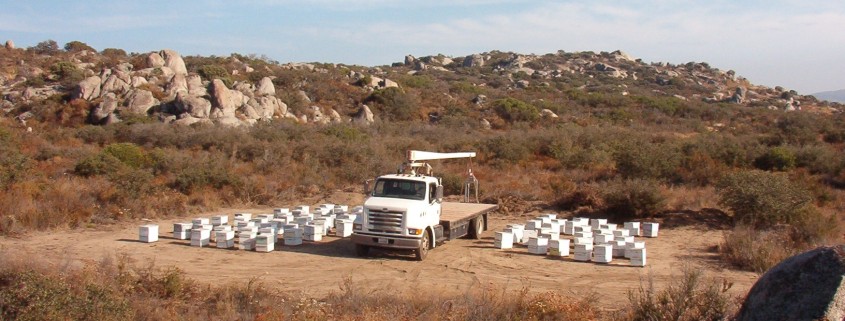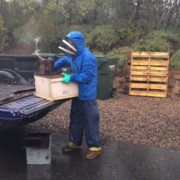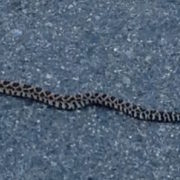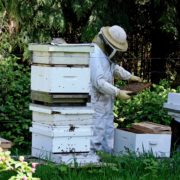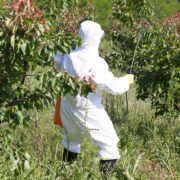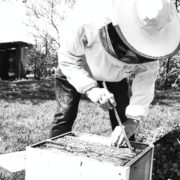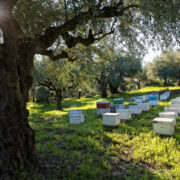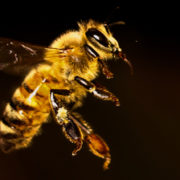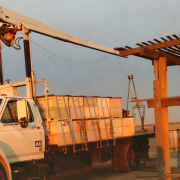Waiting For Nightfall
One of the unusual aspects of working in commercial beekeeping is the keeping of inconsistent and irregular work hours. Especially when moving bees, large amounts of work takes place at night. Commercial beekeepers often need to move bees to take advantage of upcoming honey flows, evade upcoming pesticide spraying, or to establish new colonies in a new location.
It is much easier – and safer – to move bee colonies at night while the bees are dormant and inside their hives, than to move them while they are active during the height of day. The procedure usually goes something like this: Colonies are loaded onto flatbed trucks at sunset right after the last of the field workers have returned to their colonies from foraging. Then, depending on the length of the move, they are either trucked to their new location right away during the night, or they are parked temporarily while the beekeepers catch some sleep, and then installed into their new location early the next morning before the sun rises.
At Wildflower Meadows, we occasionally move colonies throughout the year for all of the reasons mentioned above. Plus, we are also constantly building and moving in mating nucs to new and existing locations for our queen rearing operation. Although much of our regular beekeeping work takes place during the day, most of our bee moving activities take place at night and during the early morning hours. The work can be hard and tiring, but the peace and natural beauty of working outside during quiet hours can make it all worthwhile.
Above, a flatbed truck sits parked with the bees, waiting for nightfall, until the moment arrives when the beekeeper can begin loading…

